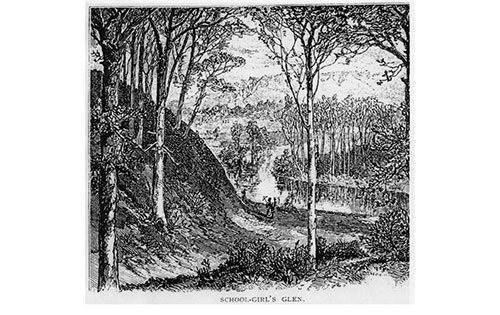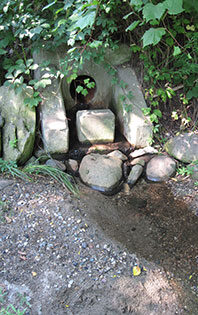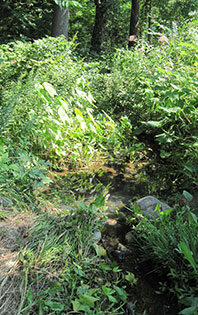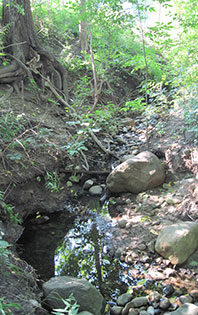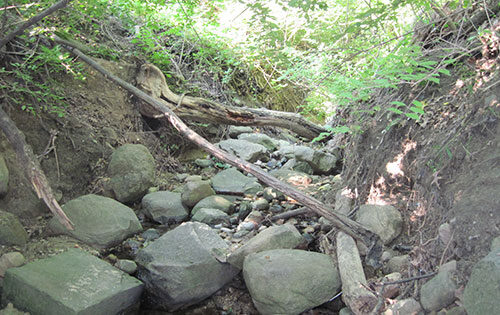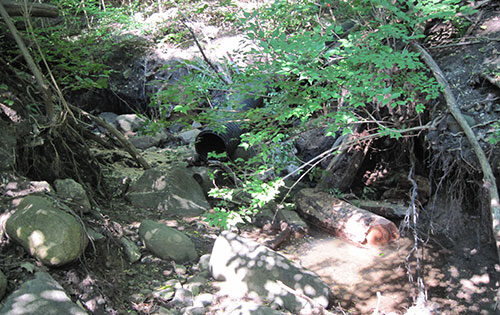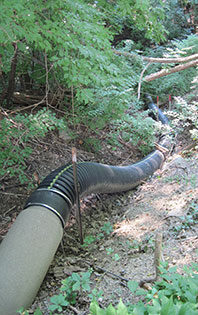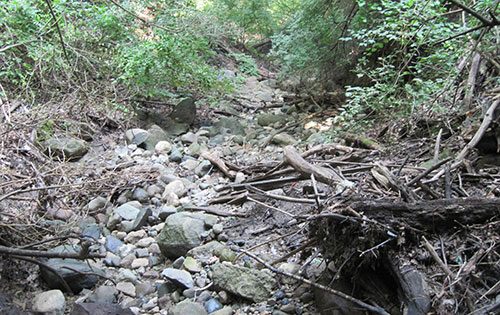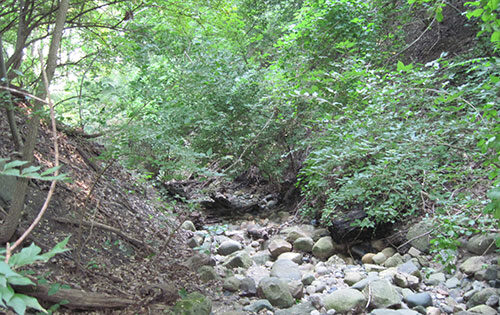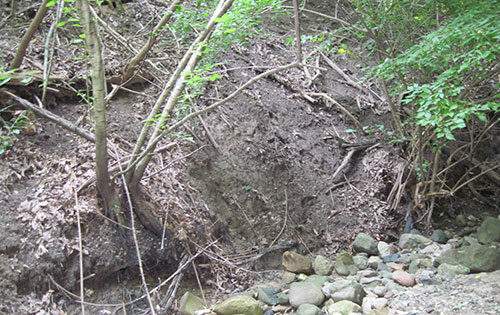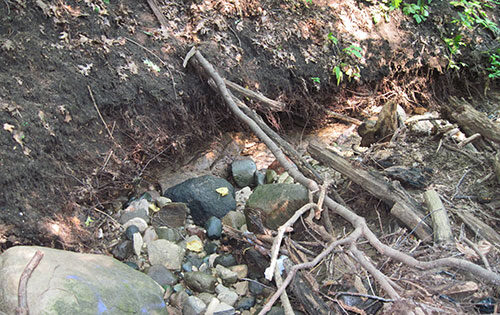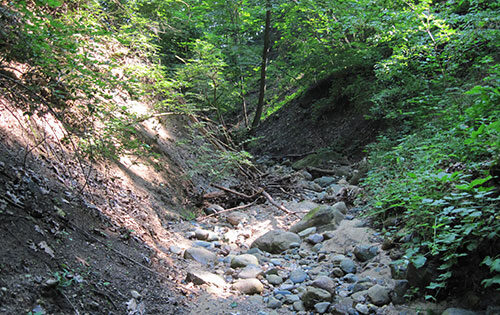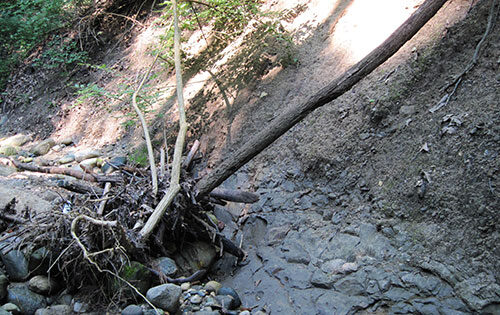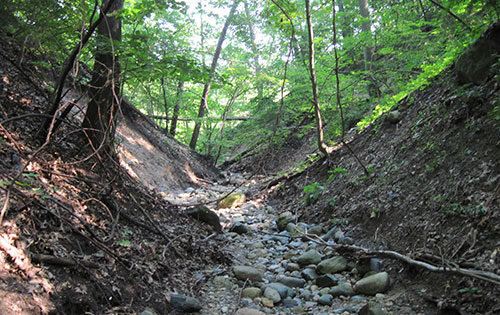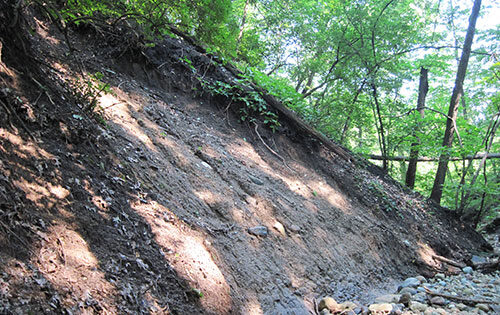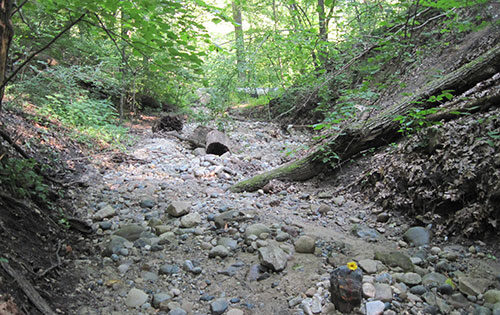The Slow Vanishing of Schoolgirls’ Glen
A special sanctuary inside Nichols Arboretum hangs on despite the spoilage wrought by human encroachment.
-
Creeping
This specimen of creeping crow’s foot was collected May 2, 1850, and preserved in the scrapbook of Mary Clark, the Ann Arbor teacher who often brought her young charges to study botany in Schoolgirls’ Glen. (Image: Papers of Mary Clark, courtesy of U-M’s Bentley Historical Library.)
-
Poetry in the soul
This 19th-century lithograph, published in an 1871 edition of Scribner’s Magazine, captures the glen’s sublime appeal.
-
Drain from Washington Heights
Schoolgirls today would see this drain, which appears at the top of the glen. (Image: R. Grese.)
-
View of constructed step pool
This image is looking down from the drain outlet. (Image: R. Grese.)
-
Rocky top
The eroding soil has exposed myriad rocks and stones. (Image: R. Greese.)
-
Washed away
Years of erosion have taken their toll. (Image: R. Greese.)
-
Roots and rubble
The glen once grew an extraordinary mixture of shrubs, ferns, wildflowers and trees. (Image: R. Grese.)
-
Drained
This drainage pipe carries water from the drain at Washington Heights to the base of the channel. (Image: R. Grese.)
-
Second drain
This second pipe carries water from the outlet down to the channel as a way of preventing further erosion. (Image: R. Grese.)
-
Encroachment
After the Second World War Schoolgirls’ Glen began to wash away. (Image R. Grese.)
-
Sticks and stones
The diversity of flowers and trees in the glen was known to attract an extraordinary range of insects and birds. (Image: R. Grese.)
-
Hanging on
The glen can never look as it did in the 1800s — too much soil is simply gone. (Image: R. Grese.)
-
Unchecked
In the early 2000s, SNRE students studied what decades of unchecked stormwater had done. (Image: R. Grese.)
-
Slow and steady
When they began to assess damage in the area, SNRE students estimated about a cubic yard of soil had washed out of the glen every day for some 35 years. (Image: R. Grese.)
-
Stemming the tide
Erosion in the glen has been slowed, thanks to concerted efforts. (Image: R. Grese.)
-
Exposed
Glacial boulders hidden underground for millenia now sit exposed on the ground. (Image: R. Grese.)
-
Ecological integrity
Birdwatchers have followed the birds to other, more hospitable spots in the Arb. (Image: R. Grese.)
-
Downriver
Erosion has exposed these pre-glaciation sediments at the base of the ravine. Geology students at U-M are able to study these samples; the glen is one of few local places where they can be seen. (Image: R. Grese.)
-
Once upon a time
“No person with any poetry in his soul can walk from the second railroad bridge north to Schoolgirls’ Glen without rhyming all the way,” a 19th-century student once wrote. (Image: R. Grese.)
-
Underfoot
The glen has changed dramatically when compared to early images from the 1800s. (Image: R. Grese.)
-
Moving on
It is expected the glen can reclaim its ecological integrity, but only if more is done, and soon. (Image: R. Grese.)


